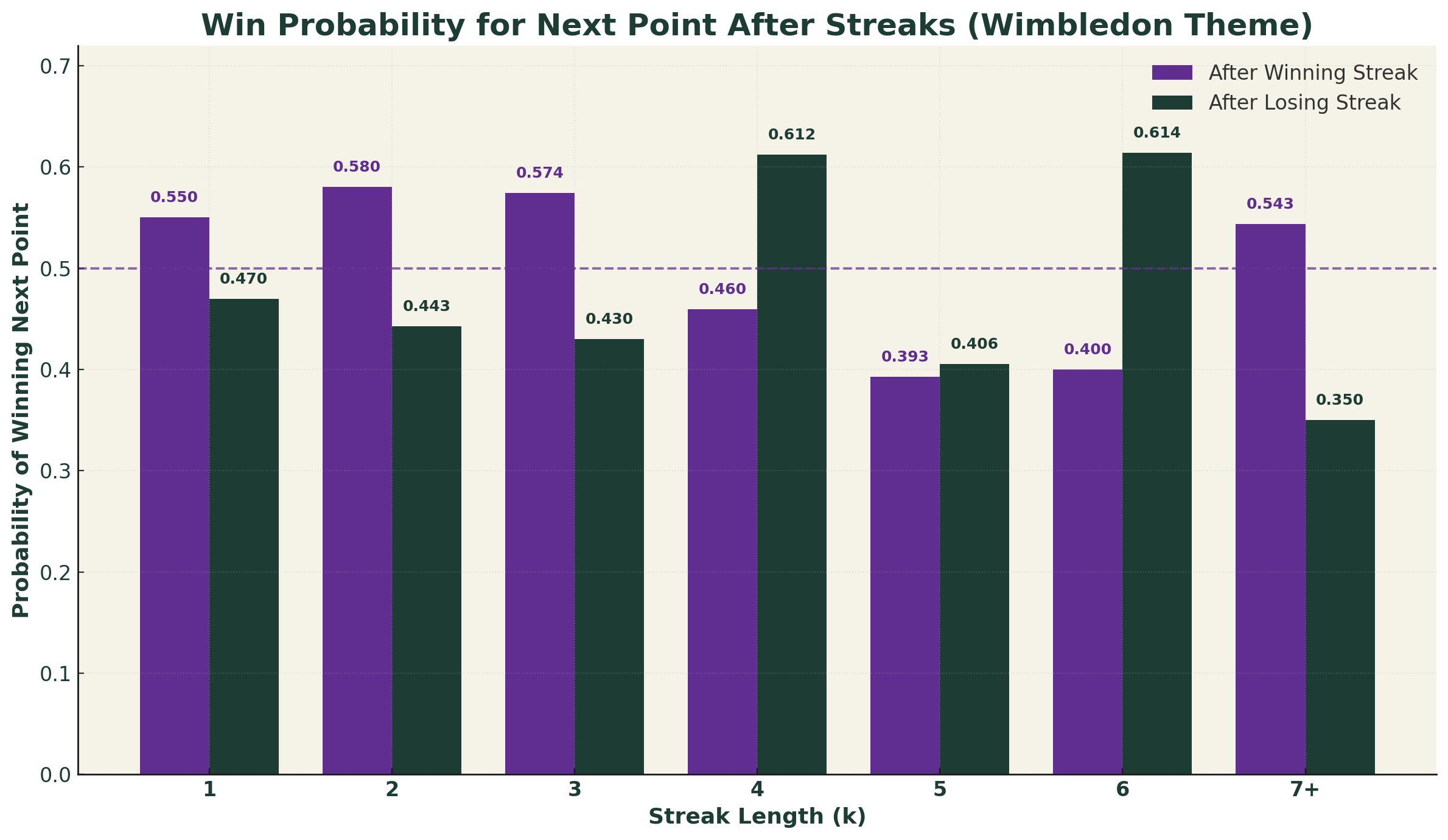Quantifying Momentum: What Analytics Are Telling Us About Match Turning Points
Momentum has always been one of the most debated concepts in tennis. Players talk about it. Commentators swear by it. Fans feel it in the crowd. But until recently, momentum lacked scientific proof.
A new research paper published by Du, Zhang and Zhou changes that. By analyzing more than 7,000 points from Wimbledon 2023, researchers built a framework that proves momentum is real, measurable, and predictive of match outcomes.
From Belief to Evidence
For decades, momentum sat in the gray area between psychology and superstition. Past studies hinted at it—first-set winners often kept rolling, streaks influenced confidence—but skeptics dismissed these patterns as narrative bias.
The new study closes the debate. Using Chi-squared tests, the researchers showed point outcomes are not independent. Streaks matter, and momentum has statistical weight.
How Momentum Is Measured
The framework introduces several innovations:
Momentum Metric (M): A composite score combining unforced errors, winners, serve performance, and physical effort.
Change Points (CUSUM): A statistical tool identifies exact turning points in matches.
Shift Intensity (V): Quantifies how strongly momentum flips. A four-point streak carries far more weight than one or two points.
Predictive Modeling (BP+PSO): Feeding momentum data into a neural network increased point prediction accuracy (AUC 0.744 vs. baseline ~0.71).
Key Drivers: Unforced errors, winners, and momentum metrics emerged as the strongest predictors of outcomes.
This chart shows how momentum rises and falls across a match, with arrows marking the exact turning points where control shifted and the numbers indicating the strength of each swing.
What the Data Shows
Momentum doesn’t behave linearly. Winning three straight points improves odds modestly, but four straight creates a tipping point. Losing streaks are similar, players collapse through the first three points but often rebound at the fourth, perhaps because opponents relax or adjustments kick in.
Long streaks produce volatility: either dominance locks in, or the trailing player unravels under pressure. Momentum, the data shows, acts like a dynamic system with thresholds and reversals.
Probability of winning the next point after winning (purple) or losing (green) streaks, based on Wimbledon 2023 data.
Notice how:
· After W2–W3, probabilities stabilize around 0.57.
· At W4–W6, probabilities dip sharply (down to 0.3929 at W5).
· After L4 and L6, probabilities spike above 0.61—suggesting momentum reversals when players are pushed deep into losing streaks.
Why Players Should Care
Recognize Danger Zones: Turning points often occur at 3–4 point streaks. Anticipating them can shift tactics in time.
Cut Errors First: Unforced errors reduce win probability more than winners raise it. Consistency matters more than brilliance.
Train Under Pressure: Coaches should replicate streak-based drills—serving under a three-point skid or defending after multiple errors.
Use Analytics to Stay Grounded: Knowing momentum is measurable helps players treat it as a tactical factor, not a mystery.
OnCourtPro’s Role
At OnCourtPro, we’re embedding these insights into tools for everyday players:
AI Match Summaries that flag when momentum flipped.
Momentum Charts that visualize streaks and shifts in real time.
Training Feedback that connects turning points in your matches with practice drills.
By putting momentum into data, players can move from “I felt the match slipping” to “I know when and why it turned.”
Game Plan Final Word
Momentum in tennis is no longer myth. It’s math. And with the right tools, it can become an edge in your game. Focus on tracking your match momentum and quickly identifying points where streaks start or end.
Recognize that the number of unforced errors you make in a match is more important on win probability than the number of winners you hit. Play smart. Play strategic. Track your data.
Read the full research here: A novel methodological framework for analyzing the momentum effect in tennis singles.


